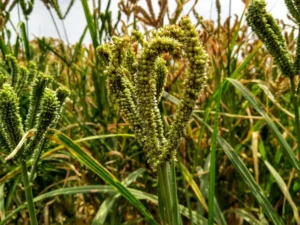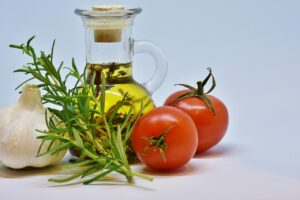Amla, a “superfruit” native to India and other nations, has achieved worldwide acclaim. There are so many health benefits of Amla. There’s no surprise when it comes to vitamin C: A 100-gram serving of fresh amla berries provides the same amount of vitamin C as 20 oranges.
Amla, also known as Indian gooseberries, grows on a blooming tree with the same name. The spherical, yellow-green, or brilliant berries are tiny and circular. They may bring out the best in even the sourest ingredients when added to dishes.
As far as we know, Ayurvedic practitioners have employed amla berries for at least 1,000 years. If included in your diet, this ancient superfruit may have a positive impact on your general well-being.
Gooseberry or Amla Facts You Should Know:
The skin on your face will seem more radiant if you eat Amla. This is accurate since it assists in preventing and treating several skin ailments. Let us look at some fascinating facts about the tart and nutritious fruit Amla before we discuss its advantages for hair and skin.
That the Dutch term for “corruption,” “kruisbes,” is often used in connection with the English word “gooseberry,”
Gooseberry was a slang term for pubic hair in the 19th century, and the term “gooseberry bush” was used in this context.
Southeast Asia, northwestern Africa, and Europe are all home to this sour yet nutritious fruit.
Gooseberry veins on the skin help to smooth the hair.
15 to 30 seeds may be found in each gooseberry fruit.
Vitamin C, B, and minerals including calcium, phosphorus, manganese, and copper are all found in abundance in this fruit.
Fruit from this tree may be harvested for 20 years before it stops bearing fruit.
The Several Varieties Of Gooseberries:
Depending on where it is cultivated, numerous types of Amla are available, each with its unique nutritional profile. It is as vital to learning about the health advantages of gooseberries as it is to learn about the variety of gooseberries growing across the globe. The following is a list of gooseberry varieties you may like to try.
Gooseberry From Fredonia
In the United States, this is a more significant kind of gooseberries that seem to be dark red, although they are native to England. Between July and August, this fruit is in season.
Achilles Gooseberry’s Response
This red gooseberry, which is petite and hairy and seems small and hairy, is expected in the UK. After the second week of July, this usually is available for purchase on the market.
The Gooseberry Of Whinham
A long-stemmed gooseberry native to England, this gooseberry species becomes purple-red as it ripens and is believed to have a wonderful flavor and aroma.
Poorman Gooseberry
The finest gooseberry in the United States, according to some, is this variety. As a result of its crimson color, it looks much larger than it is, but it also has a beautiful flavor and texture. In the United States, it is often offered in July.
The Whitesmith Gooseberry’s
English Whiter is another name for this kind of gooseberry. The color of this fruit changes from green to yellow as it matures. This is one of the better types of eating and does not need to be processed. This type may be obtained in the UK beginning in the first week of July.
Health Benefits of Amla or Indian Gooseberry:
Helps Prevent The Spread Of The Typical Cold
As far as we know, Amla is the richest known natural source of Vitamin C, which has long been recognized for its ability to promote immunity and protect cells from free radical damage. The immune system’s macrophages and other cells operate better when vitamin C is consumed regularly.
Oxygen and hydrogen interactions in food and the environment produce free radicals, which antioxidants help neutralize. Premature aging and cell damage are caused by free radicals, which may be reduced by ingesting Amla.
Lowers LDL (Bad) Cholesterol
Amla lowers harmful cholesterol and maintains healthy cholesterol levels. As a result, fat buildup in the arteries and veins may be reduced. It minimizes the chance of developing atherosclerosis and increases cardiovascular health in general.
To Help You Lose Weight
Studies have shown that Amla’s fat-burning abilities are well-documented. This plant boosts metabolism, enhancing protein synthesis and lowering fat storage while promoting weight loss. Diuresis is also encouraged by the expulsion of organic pollutants via the urine, which aids in the lowering of fluid.
Because of its influence on weight, it may effectively reduce obesity, particularly in persons with diabetes and cardiovascular issues.
Enhance The Digestive System
This fruit has a high fiber content, which aids in food movement through the digestive tract. People in nations like the United States and many parts of Europe do not eat as much fiber as Indians do. As a result, they are more likely to have digestive issues, including constipation and delayed intestinal transit.
Amla’s high fiber content helps to alleviate these issues. It enhances gastric juices’ ability to break down food at the stomach level to aid digestion. Alleviate gas and heaviness, and it is also beneficial.
Excellent Anti-Inflammatory Properties
The usefulness of Amla extract for the treatment of hay fever, arthritis, osteoporosis, and joint pain has been shown in a large number of research. Proinflammatory cells such as cytokines, coxs, and other mediators, prevalent in chronic conditions such as rheumatoid arthritis and cancer, may be reduced by this plant’s action at the cellular level.
Amla And Its Cancer-Fighting Properties
According to several research, consuming amla extract has been shown to stop the oncogenesis process in four primary ways.
Damage To The DNA Structure Of Cells May Be Limited And Prevented
The oxidation of free radicals causes harm to susceptible tissues such as the liver, brain, breast, colon, and lung tissues, which is lessened by using this supplement.
Cytochrome P450 enzymes, which are involved in several metabolic processes throughout the body, are remarkably reduced in this supplement’s dangerous enzymatic activity. Eating fruits such as Amla may considerably lower the risk of cancer if followed by a healthy lifestyle.
Proinflammatory cell activity is reduced, and several forms of malignancies are caused by persistent inflammation. Because of its significant antioxidant properties, amla extract helps reduce the cellular inflammatory response.
Uses In Natural Cosmetics Are Among The Many Other Uses For Amla
Since vitamin C has such a high amount, it’s an excellent antioxidant. Emblicanin A and B are abundant in Amla as well. Bioflavonoids, tannins, and a mixture of phenols, including gallic acid and ellagic acid, are among the most solid and efficient antioxidants.
They all work together to reduce cell oxidation and free radical multiplication, a significant contributor to skin and hair aging.
Benefits of Amla for Skin
It eliminates impurities, thoroughly cleans and purifies the skin, and gives the face a radiant glow as a tonic. All skin types, notably dull or devitalized ones and aged skin, benefit from the antioxidant properties of Amla. It’s an excellent skin regenerator that helps combat the effects of aging.
Benefits of Amla for Hair
Because it stimulates the follicles, it promotes hair growth, strengthens the roots, and helps to regenerate hair follicles, making it an effective hair regenerator. As a result, it slows down your fall (except in cases of congenital alopecia). Its antioxidant properties may prevent premature greying. A conditioning effect is also provided, making hair more manageable and shiny. It also helps to prevent split ends by enhancing the hair’s texture.
Making Amla Juice At Home
- Making amla juice at home is straightforward and only necessitates a few standard components.
- Chop up 2–4 Indian gooseberries and put them in a blender with 1–2 cups of water to get the juices flowing!
- For example, spice it up with ginger, black pepper, honey, or sea salt.
- Once thoroughly blended everything, strain the drink through a fine-mesh strainer to remove any pulp before serving.
- Several internet sellers and specialist businesses sell pre-made amla juice if you can’t locate amla fruit in your local supermarket.
- Look for an option devoid of added sugar, artificial flavors, and preservatives for the most significant outcomes.
Finally
Amla juice is incredibly nutritious and has been related to various notable health benefits. For instance, research shows that it may boost kidney, liver, and heart health, increase immunological function and hair development, and support digestive health. In addition, amla juice is tasty and simple to produce at home, making it a fantastic supplement to a balanced diet.
FAQs:
-
How Much Should Amla Be Consumed Per Day?
You may consume 1-2 amla per day in juice or raw form. However, it is always advisable to get medical advice before consuming it. If you’re pregnant, nursing, or have been diagnosed with low blood sugar; you shouldn’t drink Amla.
-
What Are Some Of Amla’s Other Applications?
Shampoos and the dyeing industry both utilize Amla. Sauces, confectionery, dry chips, pickles, jellies, and powder. Ink is made from amla extract, while fireworks are made from wood.
-
Who Shouldn’t Consume Amla?
People with hypotension or low blood pressure should exercise extreme caution while eating Amla. This fruit is recognized for decreasing and maintaining blood pressure levels. Avoid eating Amla if you are on a blood pressure medication.
Also Read: 18 Amazing Health Benefits of Almonds to Stay Healthy


















